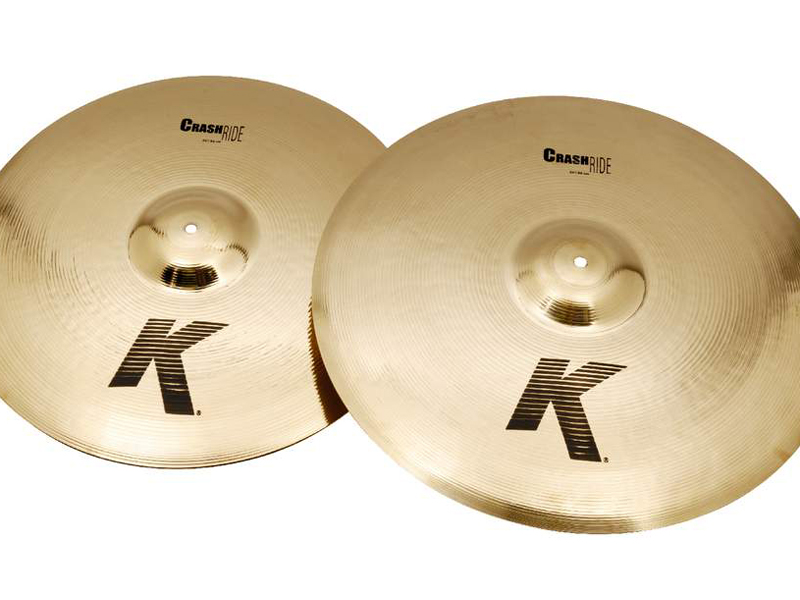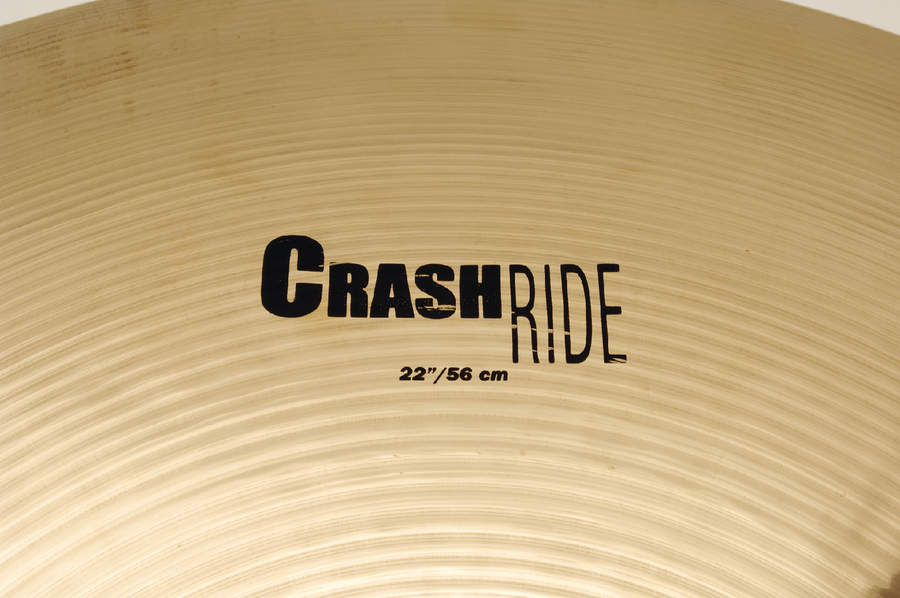MusicRadar Verdict
These crash rides are capable of a similarly diverse range of expression, from straightforward timekeeping to out-and-out cymbal frenzy. Their sizes do mark them out as being more suited to loud scenarios, but the 21" is flexible and controllable enough to grace a fair few musical environments.
Pros
- +
Brilliant finish with high-end sparkle. Diverse if played wisely.
Cons
- -
Not really suitable for quiet numbers.
MusicRadar's got your back

Zildjian K Brilliant Crash Rides

Zildjian K Brilliant Crash Rides
Though they have only just become commercially available, Zildjian's two new K Brilliant crash rides have been in existence for some time. They were originally commissioned by Who sticksman and Zildjian endorsee Zak Starkey, who has been using versions of the cymbals for at least five years.
Build
Zak required cymbals capable of supplying what he refers to as the 'wall of sound' that The Who demand. Many classic Who recordings (especially live) feature a constant wash of cymbals from Keith Moon's kit, and there is plenty of archive footage of Moon laying into a large cymbal positioned over his hi-hats for entire songs, so it's easy to understand where Zak was coming from.
Zak was closely involved in the cymbals' development, and it took several attempts before the early prototypes hit the right notes. Over the years the cymbals have been tweaked here and there at Zak's request.
The cymbals are cast from Zildjian's K bronze and feature extensive lathing on both sides, along with plenty of tidy hammer marks. They are unique among Ks in their brilliant finish, which is intended to offer high-end sparkle and smooth out the sound. At 21" and 22", they are also the largest crashes that Zildjian produces (interestingly, Zildjian has no plans to introduce a 20" Brilliant crash ride). Both cymbals share similar profiles, with the edge of the 22" tapering down a little more.
"Whacking both cymbals together was beyond painful, creeping into the realms of the masochistic".
There are so few contemporary crash rides of this size on the market that it's difficult to compare these two new Ks with anything else available. While crashable rides and large rideable crashes exist, there are virtually no specifically designated rivals to this pair.
Hands On
Though the cymbals are only separated by an inch in diameter (a mere half-inch around the edge) they are easily distinguishable from one another.
We began with the 21" model and quickly discovered four distinctive stages of playing. With blurring possible between three of the four areas, more possibilities beckon. We first played the bell, which was loud, clean and separated from the rest of the cymbal; in other words, exactly like that of a dedicated ride.We then moved the stick down onto the body of the cymbal, where it delivered a strong glassy ping, which was clearly discernible above a bright wash. The wash was certainly fairly rapid, but was harmonious rather than diverting, and it resisted taking off and smothering the ride pattern.
We then began showing more of the stick (that is, not just the tip) to the body of the cymbal, and things accelerated another notch. The cymbal opened into a rolling, frothy wash that, by its very nature, increased the excitement and energy levels. What impressed us most was the ease with which we could keep the wash tumbling away on the very edge of a full crash without it actually boiling over. In fact, it was still possible to punctuate the wash with a louder crash and then swiftly return the cymbal sound back to where it was.
The final playing stage was a maximum crash, a near wipeout of metallic fury that raised the volume threshold by some margin. At the upper dynamic levels, a Mexican wave-like wobble began coursing around the edge of the cymbal, while leaving it to ring resulted in a lingering but smooth decay.
Despite being only marginally bigger overall, the 22" model was considerably deeper in pitch. This quality ensured that the bell possessed a strong, commanding voice. Riding on the body of the cymbal brought a flurry of background wash which, though being more of a distraction, was trashier than that of the 21" and therefore added a little complexity to the equation. Bringing the cymbal up to a rolling wash brought a dramatic increase in its intensity, and like the 21" it could be held there. At full crash it was so loud that it wouldn't be an understatement to describe it as tinnitus-inducing.
Whacking both cymbals together was beyond painful, creeping into the realms of the masochistic.
MusicRadar is the number one website for music-makers of all kinds, be they guitarists, drummers, keyboard players, DJs or producers...
- GEAR: We help musicians find the best gear with top-ranking gear round-ups and high-quality, authoritative reviews by a wide team of highly experienced experts.
- TIPS: We also provide tuition, from bite-sized tips to advanced work-outs and guidance from recognised musicians and stars.
- STARS: We talk to musicians and stars about their creative processes, and the nuts and bolts of their gear and technique. We give fans an insight into the craft of music-making that no other music website can.
Zak Starkey is back in The Who. “I take responsibility for some of the confusion… Zak made a few mistakes and he has apologised”, says Pete Townshend
“We were arguing a lot and we were miserable”: How Green Day exceeded expectations with their most ambitious song
"There’s plenty for us guitarists to learn – and ‘less is more’ is the overriding lesson": how to play like George Harrison on The Beatles' Abbey Road










